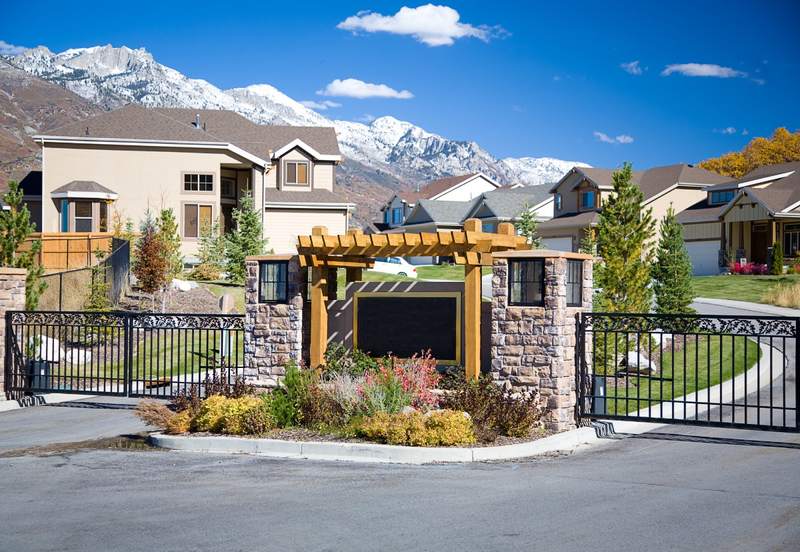
If you want to buy a home but have found it difficult to save enough for a down payment, you’re not alone. Saving that much cash can take a while — especially while paying rent on your current place and saving for other important financial goals.
With a rent-to-own home, you rent the home for a few years first and have the option to buy it at the end of that term. Each month, you’ll pay a little extra in rent that goes toward building a down payment. You’ll need to pay an option fee upfront that also will get credited toward a down payment. The idea is that rent-to-own homes allow you to move in now and save for your down payment while paying rent.
How Rent-to-Own Homes Work
With a rent-to-own home, you don’t buy the property right away. Instead, you lease it for a few years, with your landlord crediting a portion of your rent toward a down payment. When the rental period is up, you can buy the home using the down payment credits.
“A ‘rent-to-own’ home is a real estate agreement in which a renter agrees to rent a property for a specified period, with the option to buy the property at the end of the rental term,” says Adie Kriegstein, a real estate agent and founder of the NYC Experience Team at Compass in New York.
When you sign the rent-to-own contract, you’ll need to pay a flat fee upfront — known as the option fee — which will ultimately get credited to your down payment.
“As the end of the rental term approaches, you’ll want to secure financing to purchase the property so you can exercise the purchase option and buy the home,” Kriegstein says. “At this point, the option fee will be applied towards the down payment, and you will become the owner of the property.”
For example, let’s say you find a home that would usually cost $2,000 per month to rent and $500,000 to buy. For a rent-to-own arrangement with a three-year rental term, there’s an option fee of 2%. This means you’ll be paying $10,000 upfront. The rent-to-own agreement indicates that you’ll be paying $2,300 in rent each month, with $300 of that going toward the down payment. At the end of the three years, you’d have set aside $10,800. Once you’ve included the option fee, you’ll have a down payment of $20,800 — 4.16% of the purchase price.
Types of Rent-to-Own Contracts
There are two main types of home rent-to-own agreements: a lease-option agreement and a lease-purchase agreement.
Lease-option agreement
With a lease-option agreement, you’ll rent the home — usually for one to three years — with a specified portion of your monthly rent going toward a down payment, known as rent credits. At the end of the rental term, you’ll have the option to purchase the home. However, you’ll need to pay an option fee to the homeowner upfront, which usually costs anywhere from 2% to 7% of the total purchase price.
Once the home has been appraised, there may be room for negotiating with the homeowner on what the purchase price will be when your lease is up. With this type of rent-to-own contract, you can choose not to buy the home at the end of the rental term. If you decide to walk away, you’ll forfeit the money you put toward rent credits and the option fee.
Lease-purchase agreement
Like a lease-option agreement, you’ll rent the home for a few years, with a certain percentage of your rent going toward a down payment. You’ll also still pay the option fee. The key difference is that with a lease-purchase agreement, you are legally obligated to buy the home at the end of the rental term. You and the seller will agree on a purchase price when you sign the contract, and then you’ll start your lease. This will allow you to shop for a loan while you’re renting the home.
If you are unable to get financing, then you’ll forfeit your rent credits and option fee. If you breach the contract, the seller also may take legal action.
Lease-Option Agreement vs. Lease-Purchase Agreement
| Lease-Option Agreement | Lease-Purchase Agreement |
| You have the choice to buy the house or not. | You are obligated to purchase the home. |
| Rental term of one to three years. | Rental term of one to three years. |
| You’ll pay an option fee. | You’ll pay an option fee. |
| Purchase price will be determined at the end of the lease. | Purchase price will be determined before you start the lease. |
Steps to Buy a Rent-to-Own Home
Because rent-to-own agreements are less common, the details can vary depending on the buyer, seller, and home itself.
“Buying a rent-to-own home can be a complex process, so it is important to do your due diligence, seek professional advice, and carefully review the agreement before making any commitments,” Kriegstein says.
Here’s an outline of the steps to buy a rent-to-own home:
- Find rent-to-own homes. There are a number of different ways to find rent-to-own homes, including searching online listings and working with a real estate agent or brokerage. “You’ll want to start by doing your research and finding a home that fits your budget, location, and other requirements,” Kriegstein says.
- Agree on the purchase price. You can either lock in the purchase price at the beginning of the lease term or wait until the lease is up to negotiate with the homeowner.
- Apply rent to the principal. One key factor in your rent-to-own agreement is how the normal rent rate will be adjusted to account for the future purchase. Owners often set the rent 25% to 50% above market rate so that portion of the rent will go toward the down payment.
- Rent-to-own home maintenance. For many rent-to-own agreements, the landlord and tenant split the cost of repairs. As you plan for the future, you can expect financial help when something breaks or needs to be replaced — at least as long as your lease term lasts.
- Buy the property. When your lease term is ending, it’s time to look into financing options if you want to buy the property. If you no longer wish to purchase the property and have a lease-option contract, then you’ll be able to walk away — but you’ll have to forfeit your rent credit and option fee. If you have a lease-purchase contract and you back out of the purchase, you will forfeit that money and could also get sued for breach of contract.
Before You Sign the Contract
Before you enter into a legally binding rent-to-own agreement, here are some areas to go over:
- Choosing the right terms. Make sure you know whether you’re getting into a lease-purchase or lease-option agreement. A lease-option agreement is less pressure because you won’t be obligated to buy the home should you lose interest or can’t get financing.
- Researching the contract, home, and seller. Make sure you carefully review the contract and understand everything you’re getting into, including the deadline, the option fee and rent amounts, and how and when the purchase price will be determined.
- Asking the right questions. Be sure to ask questions about anything you don’t understand or anything that isn’t covered in the agreement itself. For example, what are the penalties for late payments, and under what circumstances could you lose the right to buy the home?
- Getting help. It’s never a bad idea to loop in a lawyer or real estate professional to lean on their expertise. “It’s advisable to seek counsel through a real estate attorney so they may review the agreement for you,” Kriegstein says.
Who Are Rent-to-Own Homes Right For?
Like all major financial decisions, rent-to-own homes have pros and cons. Rent-to-own homes can be a good option for people who want to buy a home but haven’t been able to save for a down payment. Rent-to-own also can be beneficial for borrowers with a low credit score or no credit, as this type of contract helps you build credit along the way and then get access to a better interest rate when it’s time to take out a home loan. If you know for sure where you want to live and want to snatch up that house before someone else does, rent-to-own might be the right move.
When Rent-to-Own Works
Here are some cases when rent-to-own can make sense:
- You need time to save for a down payment.
- You are sure you want to buy the home and don’t want to lose it to another buyer.
- You need to improve your credit score or build credit.
- You need more consistent structure to save for a down payment.
“Rent-to-own homes can be a good fit for those that have poor credit, or one who doesn’t have a down payment,” Kriegstein says. “It’s a good option for those who want to test out living in a neighborhood, or those who want to lock in a purchase price.”
When Rent-to-Own Doesn’t Work
Here are some scenarios when rent-to-own might not be the best option:
- You aren’t certain that you want to buy the home.
- You aren’t sold on the location.
- You’re often late on rent. (This can cost you your rent credit.)
- You aren’t sure you’ll be able to qualify for financing.
Spotting Rent-to-Own Scams
Unfortunately, there are scammers who dupe buyers into phony rent-to-own contracts. In some cases, a buyer will enter into an agreement and pay rent credits for months and months, only to learn that the “seller” doesn’t actually own the home or doesn’t plan to sell it.
To avoid scams, be sure to research the seller to make sure they’re the rightful owner and that they are up to date on property taxes and mortgage payments.
Alternatives to Rent-to-Own Homes
If you can’t find a rent-to-own home or don’t think this type of arrangement would be right for you, that doesn’t mean you have to give up on your homeownership dreams. If you don’t have any money saved for a down payment, Veterans Affairs loans and Department of Agriculture loans are available for no down payment for those who qualify. Conventional loans are available for a down payment as low as 3%, and you can get a Federal Housing Administration loan for a down payment of only 3.5% — but you’ll need to purchase mortgage insurance.
FAQ
Here are the answers to some frequently asked questions about rent-to-own homes.











